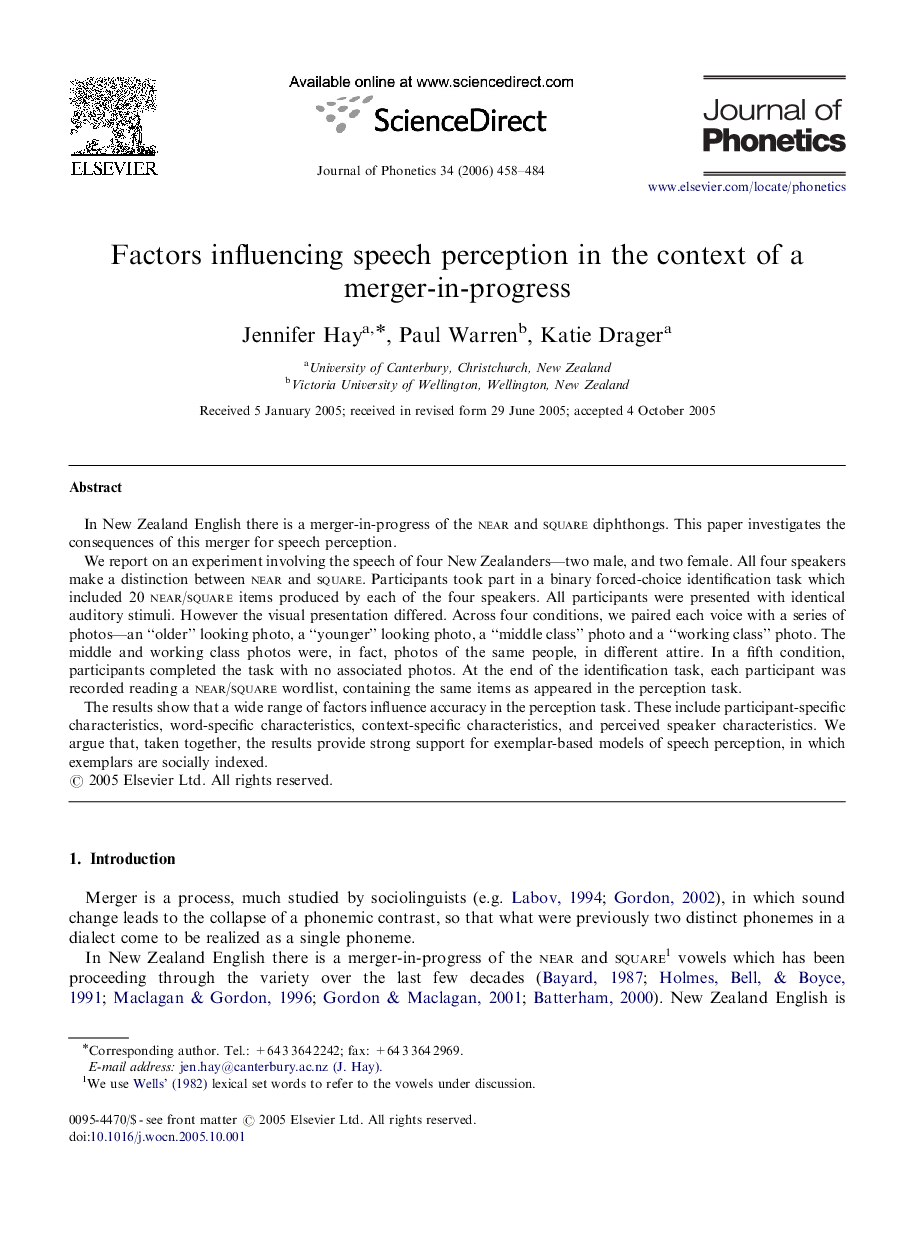| کد مقاله | کد نشریه | سال انتشار | مقاله انگلیسی | نسخه تمام متن |
|---|---|---|---|---|
| 1100882 | 953494 | 2006 | 27 صفحه PDF | دانلود رایگان |

In New Zealand English there is a merger-in-progress of the near and square diphthongs. This paper investigates the consequences of this merger for speech perception.We report on an experiment involving the speech of four New Zealanders—two male, and two female. All four speakers make a distinction between near and square. Participants took part in a binary forced-choice identification task which included 20 near/square items produced by each of the four speakers. All participants were presented with identical auditory stimuli. However the visual presentation differed. Across four conditions, we paired each voice with a series of photos—an “older” looking photo, a “younger” looking photo, a “middle class” photo and a “working class” photo. The middle and working class photos were, in fact, photos of the same people, in different attire. In a fifth condition, participants completed the task with no associated photos. At the end of the identification task, each participant was recorded reading a near/square wordlist, containing the same items as appeared in the perception task.The results show that a wide range of factors influence accuracy in the perception task. These include participant-specific characteristics, word-specific characteristics, context-specific characteristics, and perceived speaker characteristics. We argue that, taken together, the results provide strong support for exemplar-based models of speech perception, in which exemplars are socially indexed.
Journal: Journal of Phonetics - Volume 34, Issue 4, October 2006, Pages 458–484